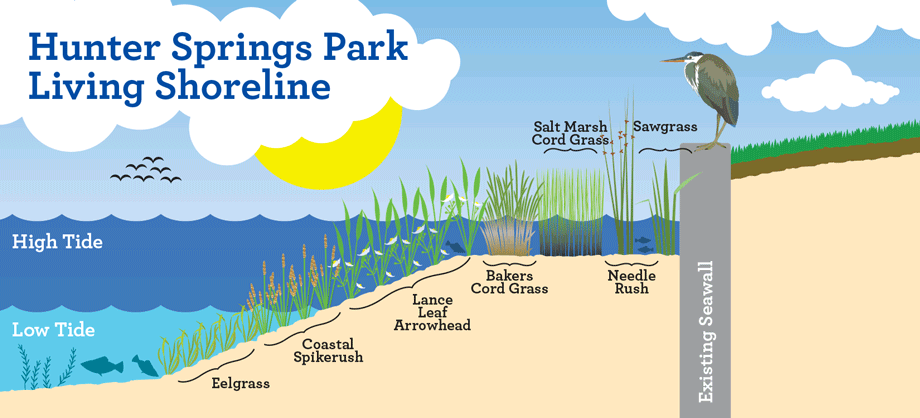This project restored shoreline habitat to improve water quality in Kings Bay.
Project Overview
The District restored the shoreline around Hunter Springs Park. The City of Crystal River has integrated this District project into the redesign of the park.
The restored shoreline will benefit the Crystal River/Kings Bay spring system by creating habitat and improving water quality through reducing erosion and nutrients entering Kings Bay.
Background
The previous shoreline at Hunter Springs Park contained a degraded bulkhead. Bulkheads and seawalls are often used to stabilize shorelines, yet they reduce the shoreline’s ability to carry out natural processes, can increase the rate of erosion and provide little habitat.
This is the District’s first “living shoreline” in a spring system. A living shoreline is a newer approach to stabilize banks. It mimics a natural habitat and uses native vegetation and fill materials such as limestone rock and sand. Living shorelines have been very successful in salt marshes across the country, including in Tampa and Sarasota Bays.

Project Details
The new living shoreline at Hunter Springs Park has different zones based upon varying water levels and potential for erosion. In areas prone to erosion, limestone rocks will be used to protect the shoreline. In other areas, a more naturally slopping shoreline was created. A variety of native plants such as sawgrass and needle rush were installed to create a wetland habitat, and eelgrass was planted in the water along the restored shoreline.
Vegetation helps hold soil in place to slow erosion, filter pollution, add habitat and provide a more visually appealing shoreline. If successful, the park could become a model for waterfront homeowners looking to join the community effort to restore Kings Bay.
Project Timeline
The project was completed in October 2016.
